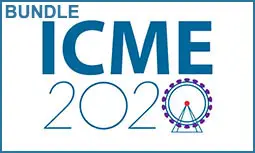Human Parsing Based Alignment with Multi-task Learning for Occluded Person Re-identification
Houjing Huang, Xiaotang Chen, KAIQI HUANG
-
Members: FreeSPS
IEEE Members: $11.00
Non-members: $15.00Length: 08:31
09 Jul 2020
Person re-identification (ReID) has obtained great progress in recent years. However, the problem caused by occlusion, which is frequent under surveillance camera, is not sufficiently addressed. When human body is occluded, extracted features are flooded with background noise. Moreover, without knowing location and visibility of parts, directly matching partial images with others will cause misalignment. To tackle the issue, we propose a model named HPNet to extract part-level features and predict visibility of each part, based on human parsing. By extracting features from semantic part regions and perform comparison with consideration of visibility, our method not only reduces background noise but also achieves alignment. Furthermore, ReID and human parsing are learned in a multi-task manner, without the need for an extra part model during testing. In addition to being efficient, the performance of our model surpasses previous methods by a large margin under occlusion scenarios.



